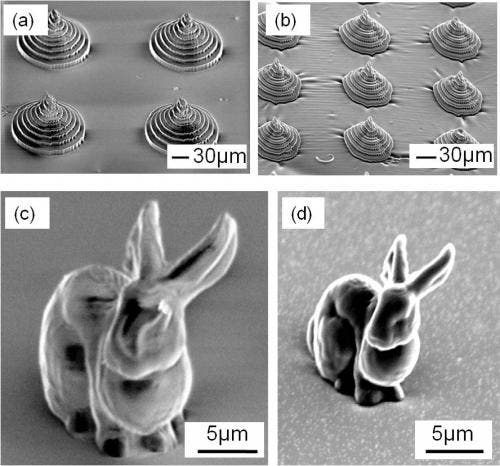
Researchers in Japan made good use of a new, state-of-the-art micro sculpting technique to create objects so small that they are the size of a single bacteria. One of these objects is the smallest bunny in the world, only a few micrometers wide, but the researchers have also demonstrated other shapes as well. Their work has applications in new technology that may someday be used to print cells and micro-electrodes for medical purposes, as well as other electronic devices where tiny parts of complex shape are required.
The technique was used on a novel type of resin that was molded into complex, highly conductive 3-D structures. Then the structures were carbonized (or charred), which increases the conductivity of the resin, essential for biomedical purposes.
“One of the most promising applications is 3-D microelectrodes that could interface with the brain,” says Yuya Daicho, graduate student at Yokohama National University and lead author of the paper.
These brain interfaces, rows of needle-shaped electrodes pointing in the same direction like teeth on combs, can send or receive electrical signals from neurons and can be used for deep brain stimulation and other therapeutic interventions to treat disorders such as epilepsy, depression, and Parkinson’s disease
Scientists used UV light and lasers to get the desired shapes.”When we got the carbon bunny structure, we were very surprised,” says Shoji Maruo, the project’s advisor. “Even with a very simple experimental structure, we could get this complicated 3D carbon microstructure.”
The technique was described in the journal Optical Medical Express. [article source]
Was this helpful?



